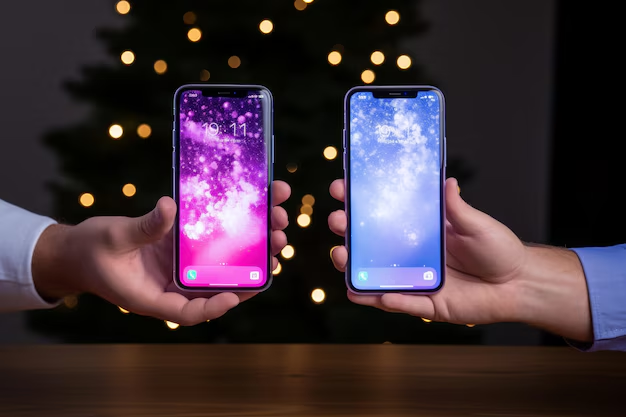Effortless iPhone Transfer: Your Complete Guide to Migrating Data
If you've recently upgraded to a shiny new iPhone, you're likely excited about its enhanced features, sleek design, and improved performance. However, before you dive into exploring your new gadget, there’s a crucial step you need to handle first: transferring your data from your old iPhone. Fear not, as this process is more straightforward than it might seem. In this comprehensive guide, we'll walk you through various methods of transferring data between iPhones, ensuring a smooth transition for all your valuable information. 📱✨
Why Transfer Your Data?
Switching to a new iPhone can be a refreshing experience, but it becomes cumbersome if you lose all your important data in the process. From cherished photos and apps to essential contacts and texts, transferring your data ensures continuity and saves you from the headache of starting from scratch.
Key Data Types to Transfer
- Photos & Videos: Capture memories without losing any.
- Contacts: Keep in touch without having to recollect phone numbers.
- Messages & Call Logs: Important conversations and dial-in details.
- Apps & App Data: Retain app progress and preferences.
- Settings & Layouts: Seamlessly continue your digital routine.
Methods for Transferring iPhone Data
There are several tried-and-true methods for transferring data from one iPhone to another, each catering to different preferences and circumstances.
Using iCloud
iCloud Backup and Restore is a popular choice for many users due to its convenience and wireless functionality.
Steps to Transfer via iCloud:
Backup Old iPhone to iCloud
- Connect your old iPhone to Wi-Fi.
- Go to Settings > [Your Name] > iCloud > iCloud Backup.
- Tap Back Up Now and ensure the backup finishes successfully.
Restore New iPhone from iCloud
- During your new iPhone setup, select Restore from iCloud Backup.
- Sign in with your Apple ID.
- Choose the most recent backup from your old device.
🔑 Key Takeaway: Ensure you have enough iCloud storage space and a stable Wi-Fi connection to avoid interruptions.
Using Quick Start
For those running iOS 11 and later, Quick Start offers a faster method that involves placing both devices near each other.
Steps to Transfer via Quick Start:
Prepare the New iPhone:
- Turn on your new iPhone and place it near your old device.
- The Quick Start screen will appear on your old iPhone.
Authenticate the Transfer:
- Use your Apple ID to set up your new iPhone.
- An animation will appear, prompting you to use your old iPhone’s camera to scan your new device.
Complete the Setup:
- Follow on-screen instructions to finish setting up.
🔑 Key Takeaway: Quick Start significantly reduces setup time, transferring the basics like Wi-Fi settings, Apple ID, and device data efficiently.
Transferring Using iTunes or Finder
For those who prefer using a computer, iTunes (for PCs) or Finder (macOS Catalina and later) is a robust choice.
Steps to Transfer via iTunes/Finder:
Backup Old iPhone:
- Connect the old iPhone to your computer.
- Open iTunes or Finder.
- Select your device and click Back Up Now.
Restore to New iPhone:
- Start setting up your new device, opting for Restore from Mac or PC.
- Connect your new iPhone to the computer.
- Select Restore from this backup in iTunes/Finder.
🔑 Key Takeaway: iTunes/Finder allows a thorough backup including apps, settings, and even browser favorites.
Considerations and Tips
Storage and Space Management
Transferring large amounts of data requires sufficient space, whether in iCloud or local storage. Regularly managing and decluttering your storage helps avoid transfer issues:
- Delete Unnecessary Apps or Files: Lighten your data load before transfer.
- Evaluate Photo and Video Quality: Lower resolutions can save space if quality isn’t paramount.
Troubleshooting Common Issues
While most transfers complete smoothly, you might encounter hiccups:
- Connectivity Problems: Ensure a stable Wi-Fi connection or USB cable connection.
- Insufficient Space on iCloud: Consider freeing up space or purchasing additional storage.
Protect Your Data
Before initiating any data transfer, it's crucial to think about security:
- Secure Your Backups: Ensure all backups are encrypted, particularly concerning sensitive information.
- Two-Factor Authentication: Enable this for an added layer of security when signing into iCloud.
Summary of Transfer Methods
Here's a quick reference table summarizing the methods discussed above:
| Method | Pros | Cons |
|---|---|---|
| iCloud | Wireless, convenient | Requires Wi-Fi, iCloud storage |
| Quick Start | Fast, easy, seamless | Needs both devices nearby |
| iTunes/Finder | Comprehensive, reliable | Requires computer access |
Maximize Your iPhone Experience
Having successfully transferred your data, you're ready to fully enjoy the features and improvements of your new iPhone. Ensure your device remains optimized by keeping software updated, managing storage, and regularly backing up your data.
Embrace the seamless connectivity iPhones are known for, knowing that with just a few taps you’ve secured all your vital information from the previous device. Now, let the exploration begin! 🚀💡

Related Topics
- How Can I Transfer a Video From Iphone To Computer
- How Can I Transfer Apps From Iphone To Ipad
- How Can I Transfer Apps From One Iphone To Another
- How Can I Transfer Contacts From Iphone To Iphone
- How Can I Transfer Contacts From One Iphone To Another
- How Can I Transfer Data From Iphone To Android
- How Can I Transfer Data From Iphone To Iphone
- How Can I Transfer Data From Iphone To Samsung
- How Can I Transfer Files From Android To Pc
- How Can I Transfer From Iphone To Samsung